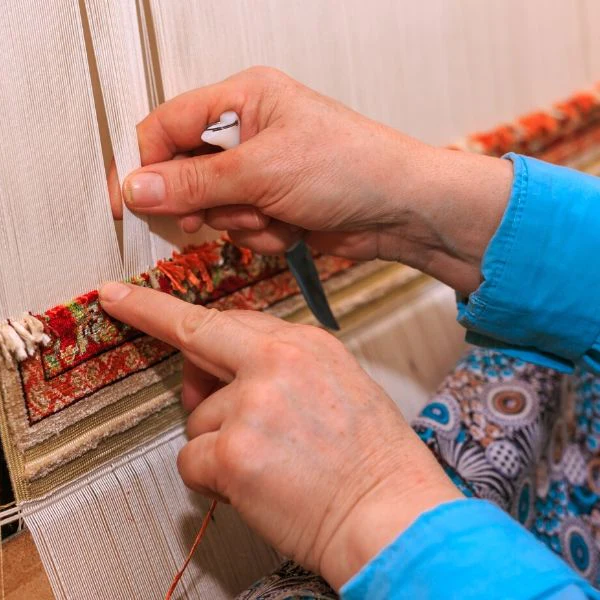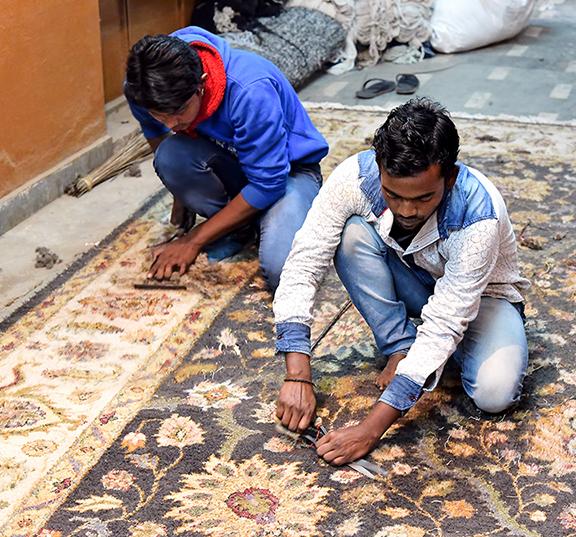This is our story to Express Weaver Community Art and Passion in the Carpets

Est. 1997
400+ Family’s
Worldwide Customer’s
Worldwide Delivery

Our manifesto
Mughal carpets hold significant cultural, historical, and artistic importance due to their exceptional craftsmanship, intricate designs, and connection to the Mughal dynasty that ruled over the Indian subcontinent from the early 16th to the mid-19th century. Here are some reasons why Mughal carpets are considered important:
Artistic Mastery: Mughal carpets are renowned for their exquisite artistry and craftsmanship. They often feature intricate patterns, vibrant colors, and meticulous detailing, showcasing the high level of skill possessed by the artisans who created them.
Cultural Heritage: Mughal carpets are an integral part of the cultural heritage of the Indian subcontinent. They reflect the blending of various artistic influences, including Persian, Indian, and Central Asian styles, which were characteristic of the Mughal Empire’s diverse cultural milieu.
Historical Significance: Mughal carpets offer insights into the socio-economic and political contexts of the Mughal period. They were used as status symbols, gifts, and tokens of diplomatic relations, and they often adorned the courts and palaces of Mughal emperors and nobility.
Architectural Integration: Mughal carpets were often used to adorn the floors of grand palaces, mosques, and other significant architectural structures of the time. They played a role in enhancing the aesthetic appeal of these spaces and were an integral part of the overall design.
Symbolism and Design: The intricate designs on Mughal carpets often carry symbolic meanings, reflecting themes from nature, mythology, religion, and courtly life. These designs offer insights into the cultural and philosophical aspects of the Mughal era.
Economic Impact: The production of Mughal carpets supported a thriving cottage industry, providing employment opportunities for skilled artisans. The trade in these carpets also contributed to the economy of the Mughal Empire.
Cross-Cultural Exchange: Mughal carpets served as cultural ambassadors, showcasing the artistic exchange between various regions. The blend of Persian and Indian artistic elements in these carpets highlights the interconnectedness of cultures during that time.
Collectible Art: Mughal carpets are highly sought after by collectors and art enthusiasts worldwide. Their rarity, historical significance, and artistic value make them prized pieces of art that are often displayed in museums, private collections, and exhibitions.
Preservation of Heritage: As historical artifacts, Mughal carpets are valuable for their role in preserving the memory of the Mughal period and the artistic traditions of that time. Studying and preserving these carpets helps to ensure that this cultural heritage is passed on to future generations.

In summary, Mughal carpets hold importance as artistic masterpieces, cultural artifacts, historical documents, and symbols of cross-cultural exchange. They offer insights into the past and serve as a reminder of the rich and diverse heritage of the Indian subcontinent during the Mughal era.
Adil Khan
Managing Director

